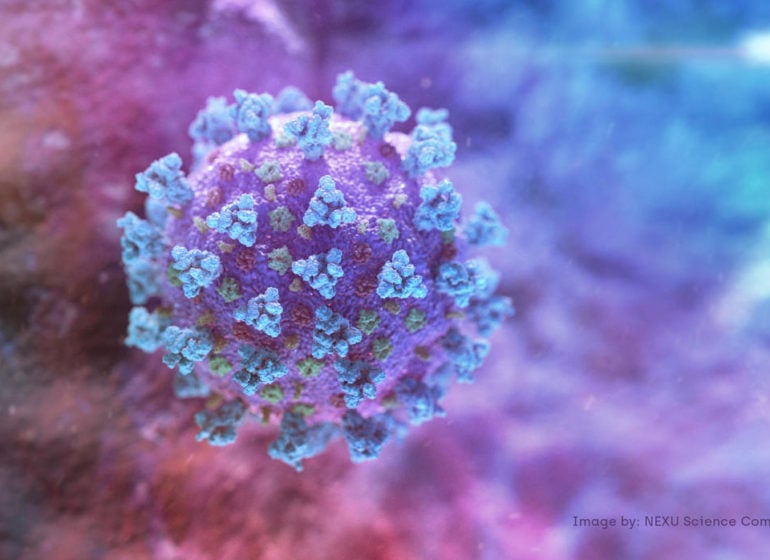BY SUNDAY OMEIKE
One major area of biological sciences came to the fore of COVID-19 issue in recent days, and that is mutation. It became popular due to two stories emanating from it, one causing national panic and the other bringing international relief to both scientists and society.
Many Nigerians heard the infamous and apocalyptic 8-minute WhatsApp audio recording that spawned bogus claims like the country is broke, used equipment would be purchased from China and 45 million Nigerians could get infected with COVID-19. The silent but scientifically important claim the saucy author raised is that “we have two strains” of SAR-CoV-2, that the virus which causes COVID-19 has mutated.
The second is however good news, that SAR-CoV-2 samples from China and some other parts of the world (Italy and USA) studied for potential differences showed slight genetic differences based on location but the virus itself has not mutated to warrant two or more drugs/vaccines for eradication.
So, this raises a confusion that forms the question: has SAR-CoV-2 virus mutated? Based on the outlay in the previous two paragraphs, I can pull two schools of thought out of the rabbit bag. To the non-scientific public, no, the virus has not mutated, but fellow scientists- especially molecular biologists- could say yes. Before I clarify these two to find a common ground in which both meet halfway, I need to clarify some scientific jargons. What is mutation and how does it come about?
Mutation is a permanent alteration of genetic material (DNA or RNA) of an organism resulting in a change in genetic makeup. This change can either be silent or pronounced, beneficial or harmful, and could just result in minor tweaks in phenotypic (physical) characteristics. This could, using bacterial cells and viral particles as an example, result in two cells/particles having slightly different genetic information (strains).
Taking on the scientific part of this discourse, it does not look as easy as stated in the above. This is because there are core genes and accessory genes. While the core genes of a particular strain remain the same, accessory genes per particle could be diverse in different communities despite the virus being the same, due to the need to adapt itself to prevalent conditions, or some errors that are not yet scientifically define, as Bo Segerman, a lecturer in Sweden explained in his 2012 review. Think of this as the same person showing up to different towns with different tools that he intends to use in adapting to the environment, or for a yet unknown purpose; this could be termed mutation in its own right.
A more aggressive version is observed in the Human Immunodeficiency Virus (HIV), the virus that causes the deadly Acquired Immuno-Deficiency syndrome (AIDS), as explained by Sophie Andrews and Sarah Rowland-Jones of the University of Oxford in their 2017 review article. There are two HIV strains- HIV-1 and HIV-2, the former more aggressive than the latter. Both are becoming increasingly resistant to antiretroviral drugs, and this is because of its ability to evolve per replication cycle.
This does not mean the genetic core has changed, but there are additions (mutation) to the gene pool that results in reduced response to drugs meant for their treatment. This is a consequence of several different mutated particles within a system: particles of the same strain but with a slight difference in the genome that has resulted in profound drug resistance. This form of mutation has also been previously reported in the coronavirus family. More significantly, the first SARS-CoV virus birthed in 2002 had moderate mutations without changing course, while the SARS-CoV-2 virus was recently reported to have less than ten genetic changes, which is not enough to cause panic in the search for a drug to treat the infection or a vaccine to prevent it.
Following the above scientific confusion, I, therefore, return into the average man’s world to say that mutation is mutation, regardless of the scale of the effect it has on a community of bacterial cells or virus particles. The onus falls on the epidemiologist and molecular biologist to determine the scale of effect medically and genetically respectively.
However, I conclude in the public square by stating that while there are two strains of the HIV virus and each one is increasingly drug-resistant, different types of coronaviruses have been discovered since the start of the millennium. There are also two types of SARS coronavirus, the SARS-CoV and SARS-CoV-2 strains, but most importantly, there is only one strain of the SARS-CoV-2, only slight changes in samples from affected countries virus is reported and this could be due to immunological and environmental factors.
Dr. Sunday Omeike is a Microbiology Lecturer in the Department of Biological Sciences, McPherson University, Seriki Sotayo, Ogun State. He tweets @OmeikeSunday
Copyright 2025 TheCable. All rights reserved. This material, and other digital content on this website, may not be reproduced, published, broadcast, rewritten or redistributed in whole or in part without prior express written permission from TheCable.
Follow us on twitter @Thecablestyle

